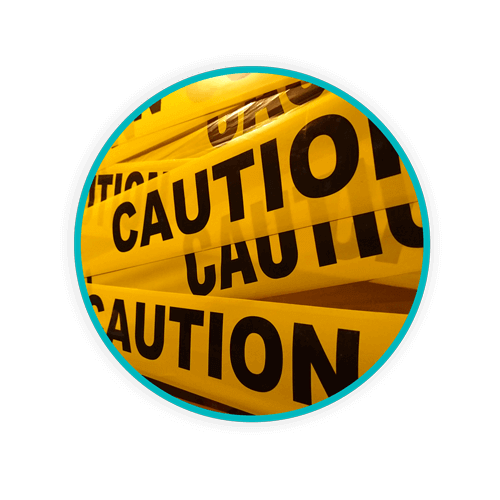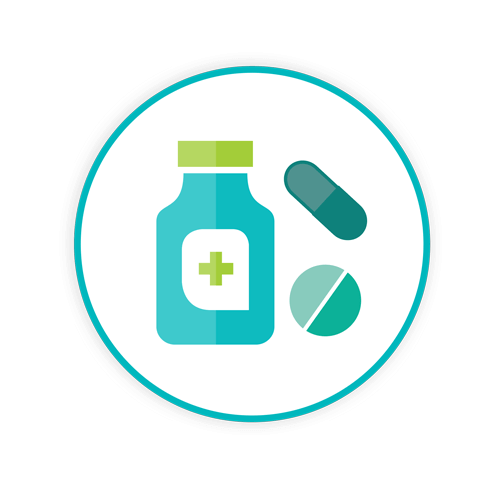Healthcare Waste Considerations for Pharmacies

Clinical waste management is not limited to hospitals, care centres, or GP facilities, but also applies to community pharmacies. Regulations for pharmacies are not the same across the board. Often complex regulatory guidelines for larger pharmacies such as those found inside hospitals are mandated by the NHS Pharmaceutical Quality Assurance Committee.
Statutory duty of care, segregation, labeling and classification of medicines, records, and waste audits are applicable to all pharmacies, regardless of size. Pharmaceutical waste must be handled, transported, and disposed of properly to avoid fines, penalties, and potentially criminal charges for non-compliance.
TOPICS WE WILL COVER:
1 / Pharmacy Responsibility for Clinical Waste Management
3/ Special Emphasis on Controlled Drugs
Pharmacy Responsibility for Clinical Waste Management
According to the Department of Health’s Health Technical Memorandum (07-01: Safe Management of Healthcare Waste) proper identification, segregation, and disposal methods must follow a waste management chain of regulatory practices from the point of origin to waste disposal. Emphasis is on the pharmacy’s responsibility, which doesn’t end when their waste is gathered by a waste collector.
Every pharmacy employee is obligated to follow guidelines for:
- Segregation
- Labeling
- Packaging
- Storage
- Documentation
-
Transfer
Maintain compliance and ensure that public health and the environment is protected from improper pharmaceutical disposal or from other pharmacy products such as syringes. Proper training of employees and staff members about waste procedures is the responsibility of the pharmacy management to ensure full compliance with regulations.
Hazardous or Non-Hazardous?
The primary consideration when it comes to clinical waste at a pharmacy is whether a medicine is classified with a hazardous or non-hazardous waste status. A medication is deemed cytotoxic or cytostatic for waste classification if it includes any of the following characteristics:
- Carcinogenic
- Acutely toxic
- Mutagenic
-
Toxic for reproduction
Medicinally contaminated and non-medicinally contaminated drugs are also deemed hazardous.
When it comes to segregation, classification, packaging and labeling, refer to guidelines of the Health Technical Memorandum for specifics. For example, a number of factors must be taken into consideration for waste segregation, including the permits, capabilities, and limitations of area waste disposal facilities, packaging requirements for certain medications for safe transport, and about actual segregation processes.
Know Your Waste!
Does every employee in your pharmacy know segregation requirements for:
- Cytotoxic and cytostatic waste
- Clinical waste (orange bag)
- Offensive waste (yellow/black bag)
- Waste chemicals
- Medicinally or non-medicinally contaminated sharps
-
Other medicines
Do they know how to classify waste medicines (chemical properties and their source)?
Are they aware that they are not allowed to mix hazardous waste with non-hazardous waste?
Do they know that it is the responsibility of a pharmacy that receives any mixed waste (returned to pharmacies by household users) to separate it using safe and practical methods?
It’s also the pharmacy’s responsibility to make sure that chemically incompatible agents are not placed in the same container. All waste must be properly packaged and labeled for transportation.
The pharmacy is also responsible for reporting and documenting (and accurately quantifying) subgroups based on usage. Subgroups include:
- Cytotoxic/cytostatic medicines from human or animal health care;
- Cytotoxic/cytostatic medicines from domestic households/patient medication returns;
- Other medicines from human and animal healthcare scenarios;
- Other medicines from domestic households/patient medication returns.
Based on the size of the pharmacy and its location, regulations can become quite complex. Standard operating procedures must be in place for handling of unwanted/returned medicines from households or other sources.
Special Emphasis on Controlled Drugs
Standard operating procedures must be in place due to expectations that all pharmacies will receive hazardous as well as non-hazardous waste. Separate waste containers for each should be used. When it comes to controlled drugs, pharmacies are mandated to comply with specific regulations that include:
- Misuse of drugs regulations
- Misuse of drugs (safe custody) regulations
- Controlled drugs (supervision of management and use) regulations
Each of these regulations provides requirements for controlled drug storage and waste. Controlled drugs produced on-site at a pharmacy may take advantage of certain exemptions, although those exemptions must be registered with specific environmental regulators.
Denaturing of certain controlled drugs must follow compliant methods provided by the Royal Pharmaceutical Society of Great Britain and should also be disposed of in appropriate waste containers.
Maintain compliant storage and transport procedures
The importance of maintaining compliance with storage and transport/carriage regulations is not to be underestimated. Pharmacies must consider three basic storage issues based on type of waste:
- Waste produced by the pharmacy
- Medicine returns from domestic households
- Medicine returns from medical practices as well as other non-domestic sources.
In some cases, such wastes are exempt from environmental permit requirements and do not need to be registered.
Following an exemption, a pharmacy might obtain an environmental permit for temporary waste storage is at the premises of production as long as certain conditions are met:
- Storage is located at the premises where production occurs
- Storage is secured
- Waste cannot be stored for longer than 12 months
Be knowledgeable regarding exemptions required for temporary collection or collection points of medicines and sharps from domestic households or healthcare workers. Specific requirements are also applicable including use of secure containers at a collection point, that mixed wastes are not stored together, and that such wastes are not stored for more than three months. Pharmacies also have limitations on waste quantities.
Responsibility doesn’t end at waste pickup
When it comes transportation and carriage regulations, pharmacies are typically considered consignors of the carriage regulations. As such, they accept the responsibility that such regulations are met. Pay attention to specifics regarding open and unopened medicines, partially opened and used packaging, and sharps receptacles – all must comply with regulations.
Waste transfer documentation is the responsibility of the pharmacy and must be complete as well as accurate. Two types of waste transfer documentation include either a consignment note, used for hazardous wastes, or a waste transfer note used for non-hazardous wastes.
Refer to the Health Technical Memorandum for additional requirements for pharmacies including how to register as a hazardous waste producer and requirements for waste audits.
No Excuses for Improper Healthcare Waste Management
We know that regulations can be lengthy, wordy, and confusing. Sharpsmart is dedicated not only to compliance and supply of clinical waste management storage containers and receptacles, but in encouraging compliance that protects healthcare workers, the general public, and the environment. We know the law. For more information on Sharpsmart waste management solutions for pharmacies and providing sustainable options for clinical waste management across all healthcare spectrums, contact us today.
